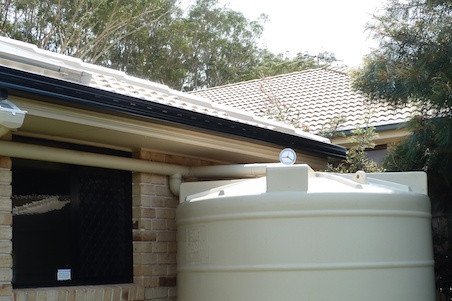
What is rainwater harvesting and why is it important?
Water is our most precious natural resource and something that most of us take for granted. We are now increasingly becoming aware of the importance of water to our survival and its limited supply.
Rain is the first form of water that we know in the hydrological cycle, hence it is a primary source of water for us. Rivers, lakes and groundwater are all secondary sources of water. In present times, we depend entirely on such secondary sources of water.
Rain is the ultimate source that feeds all these secondary sources.
Rain harvesting is simply the collection of water from surfaces on which rain falls, and storing this water for later use.
Advantages include:
• Makes use of a natural resource and reduces flooding, storm water runoff, and erosion
• Excellent source of water for landscape irrigation, with no chemicals such as fluoride and chlorine, and no dissolved salts and minerals from the soil.
• Home systems can be relatively simple to install and operate will reduce your water bill.
• Promotes both water and energy conservation.
• No filtration system required for landscape irrigation.
By capturing water directly, we can significantly reduce our reliance on water storage dams. This places less stress on these dams and can potentially reduce the need to expand these dams or build new ones.
Collecting and using your own water can also significantly reduce your water bills.
Rainharvesting reduces the flow of stormwater and minimises the likelihood of overloading the stormwater and gutter systems along roads that could result in flooding.
Rain Harvesting Techniques
All that is required to capture this water is to direct the flow of rainwater from the roof into roof gutters, through downpipes and from there into rainwater storage tanks.
Above or Below Ground Storage Tanks
When planning the installation of a rainwater tank, it is important to consider where it can be located on your property. In many cases tanks are installed above ground, especially when the tank is being installed alongside an existing dwelling. However installing the tank underground can be a good space saving solution as it enables the space to be used for other functions.
Tank Materials – Selection Criteria
When determining the type of tank to install, consider:
What ground surface preparation is required?
Whether the vessel can be installed above or below ground
How easily the material is to repair
Concrete Tanks
Concrete tanks come in two types – either delivered complete, or poured on site.
Concrete tanks can be placed either on top or in the ground. Concrete tanks are usually the most affordable for an in ground solution. They are ideal for this purpose because they can be covered with load-bearing lids and can fit under driveways or other structures.
Poly / Plastic Tanks
Poly/Plastic tanks are among the fastest growing types of tanks. They are made from polyethylene which is UV treated, impact modified, and food grade which means it is suitable for potable (drinking quality) water. Corrugated designs are particularly strong profiles by engineering design.
Polyethylene is a plastic that has been around for many years and is a proven product that will not break down in the sun.
Both tank materials above can be fitted with pumps and filters to pump water out and clean the water stored.
Rain Harvesting Accessories
First Flush System
First Flush Water Diverters are an important component of the rain harvesting system. It works by preventing the first and most contaminated water from the roof from entering the storage tank.
Its benefits are:
1. Improves the quality of rainwater stored
2. It helps extend the life of pumps used to distribute rainwater for use and any internal appliances such as hot water systems, washing machines using the rainwater harvested.
3. Reduces tank maintenance by helping to keep the storage tank clean.
Storage Tanks Gauge
Storage tank gauges provides a means of measurement of the water stored and available for use in a storage tank. It provides a valuable resource to any water tank owner and enables the easy measurement of water in the storage tank.

